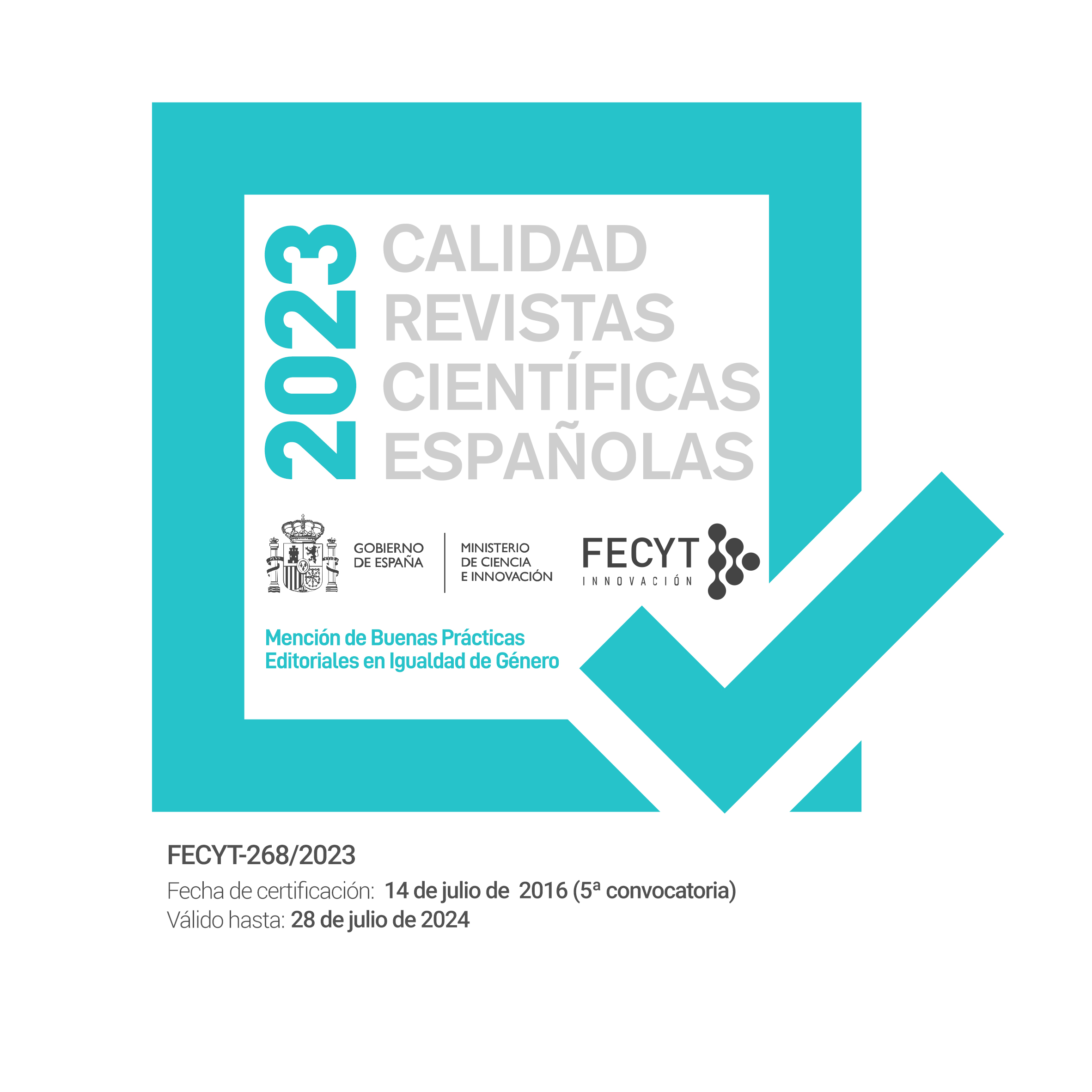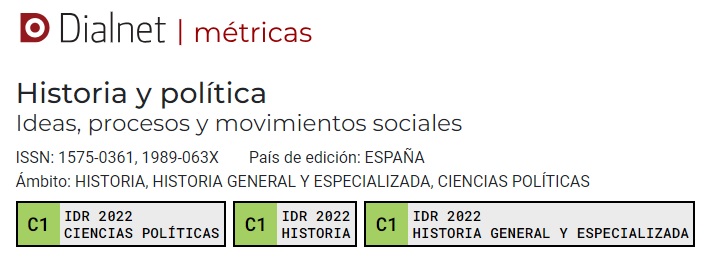History of violence against women in Contemporary Spain. Progress, deficiencies and challenges
DOI:
https://doi.org/10.18042/hp.52.12Abstract
This paper is a state of the art on the studies that have been published about
violence against women in Contemporary Spain. The main goal is to carry out a
critical review of the works published on this topic, paying special attention to the
sources used, the theoretical framework chosen and the use of the gender perspective. Lastly, a balance is made of the results of these works and possible avenues of
research for the future are proposed.
Downloads
Published
Issue
Section
License
Copyright (c) 2024 Adriana Cases Sola

This work is licensed under a Creative Commons Attribution-NonCommercial-NoDerivatives 4.0 International License.
Authors whose contributions are accepted for publication in this journal, accept the following terms:
a. The authors retain their copyright and guarantee to the magazine the right of first publication of their work, which will be simultaneously subject to the Creative Commons Attribution License Attribution-Noncommercial-No derivative works 4.0 Spain, which allows third parties to share the work as long as its author and its first publication is indicated.
b. Authors may adopt other non-exclusive license agreements to distribute the version of the published work (e.g. deposit in an institutional repository or archive, or published in a monographic volume) provided the initial publication in this journal is indicated.
PLAGIARISM AND SCIENTIFIC FRAUD
The publication of work that infringes on intellectual property rights is the sole responsibility of the authors, including any conflicts that may occur regarding infringement of copyright. This includes, most importantly, conflicts related to the commission of plagiarism and/or scientific fraud.
Plagiarism is understood to include:
1. Presenting the work of others as your own.
2. Adopting words or ideas from other authors without due recognition.
3. Not using quotation marks or another distinctive format to distinguish literal quotations.
4. Giving incorrect information about the true source of a citation.
5. The paraphrasing of a source without mentioning the source.
6. Excessive paraphrasing, even if the source is mentioned.
Practices constituting scientific fraud are as follows:
1. Fabrication, falsification or omission of data and plagiarism.
2. Duplicate publication.
3. Conflicts of authorship.






